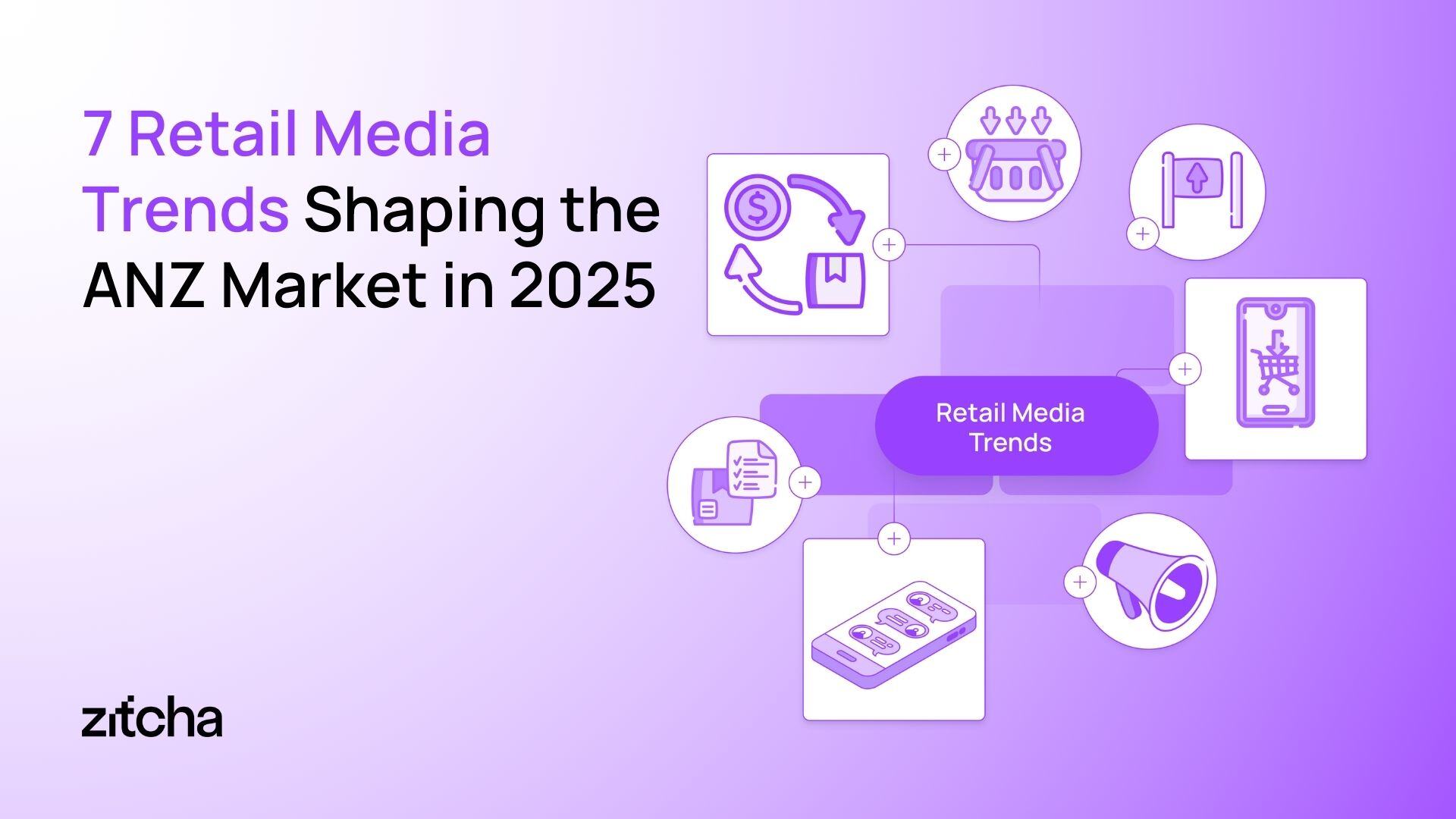

Insights from the latest Mars United Retail Media Report Card
The ANZ retail media landscape is entering a new era. According to the April 2025 Mars United Report Card, the sector is projected to nearly double in value by 2027, growing from $1.6B to $2.8B. What was once an emerging channel has matured into a critical pillar of brand and retailer marketing strategies - and expectations are rapidly evolving.
Here are seven key trends from the latest report that signal where the market is heading (and how networks and brands can keep up).
1. Retail Media Goes Omnichannel by Default
Retail media in ANZ is no longer limited to onsite display ads or search placements. The top-performing networks are now offering end-to-end solutions across:
- In-store activations (POS, demos, digital screens)
- Off-network placements (programmatic, social, BVOD)
- Brand-owned and retailer-owned channels (apps, EDMs)
17 new capabilities have been introduced across networks this year alone - everything from self-serve brand stores to delivery sampling and streaming audio. The bar has been raised.
Why it matters: To compete for brand spend, networks must connect physical and digital environments seamlessly - and provide measurement to prove it works.
2. First-Party Data Is the Competitive Edge
With privacy laws tightening and cookies on the way out, first-party data has become retail media’s crown jewel. Networks with strong loyalty programs (like Coles/Flybuys or TWC Connect) are leveraging it to build robust targeting, segmentation, and full-funnel attribution.
Clean room capabilities and brand data ingestion are becoming table stakes, not just nice-to-haves.
Why it matters: Retailers that can activate and protect their data - and provide actionable insights back to brands - will win.
3. Self-Serve Is the New Standard
The report shows a clear shift towards automation and control. Self-serve campaign setup, real-time reporting, and self-managed brand stores are no longer future features - they’re live in networks like Amazon, Cartology, Adore Beauty, and TWC Connect.
Why it matters: Brands and agencies want speed, transparency, and control. Networks that can’t offer this will start losing relevance.
4. AI Is Moving from Buzzword to Backbone
AI has officially landed in ANZ retail media. Networks like Coles 360 and Amazon are rolling out generative search, AI content generation, and automated optimisation tools. Others are leaning into dynamic creative, recommendation engines, and smart inventory planning.
Why it matters: AI isn’t just hype. It’s improving efficiency and unlocking new ad formats - and brands are starting to expect it.
5. Measurement Must Be Transparent and Standardised
Despite the growth, measurement remains a sticking point. 45% of brands say lack of transparency is still a barrier. In response, IAB Australia released a new set of measurement guidelines, and many networks are aligning with them. Look for increasing demand around:
- IAB-compliant reporting
- Incremental sales lift and new buyer metrics
- Real-time dashboards
- Closed-loop attribution
Why it matters: Without trustworthy, standardised reporting, retail media remains a hard sell at the CFO level.
6. Contextual Targeting Is Having a Resurgence
As identity-based targeting becomes trickier, contextual targeting is gaining ground. Think: digital screens in beauty aisles, shoppable recipes in grocery apps, or themed in-store activations in pubs.
Networks like Adore Beauty, David Jones, and AVC are innovating here - using contextual moments to engage consumers based on mindset, not just cookies.
Why it matters: Context + intent = high impact. Especially for non-endemic brands looking to break into retail media.
7. Retail Media Is Growing Up - and Consolidation Is Coming
More networks are launching (Petbarn, Australia Post, and Uber Advertising just this year), but the market may soon face consolidation. Brands are struggling to manage fragmentation, and the need for cross-network execution is growing.
Why it matters: Retailers that invest in ecosystem interoperability - API access, cross-platform reporting, DSP integrations - will be better positioned for long-term growth and relevance.
Final Thought
The ANZ retail media space isn’t slowing down - but not every network is ready to meet these new expectations.
Whether it’s building seamless omnichannel campaigns, unlocking better measurement, or scaling self-serve brand experiences, Zitcha helps retailers connect the dots and accelerate results.
Want to see how your retail media network stacks up - or how Zitcha could help? Let’s chat.



